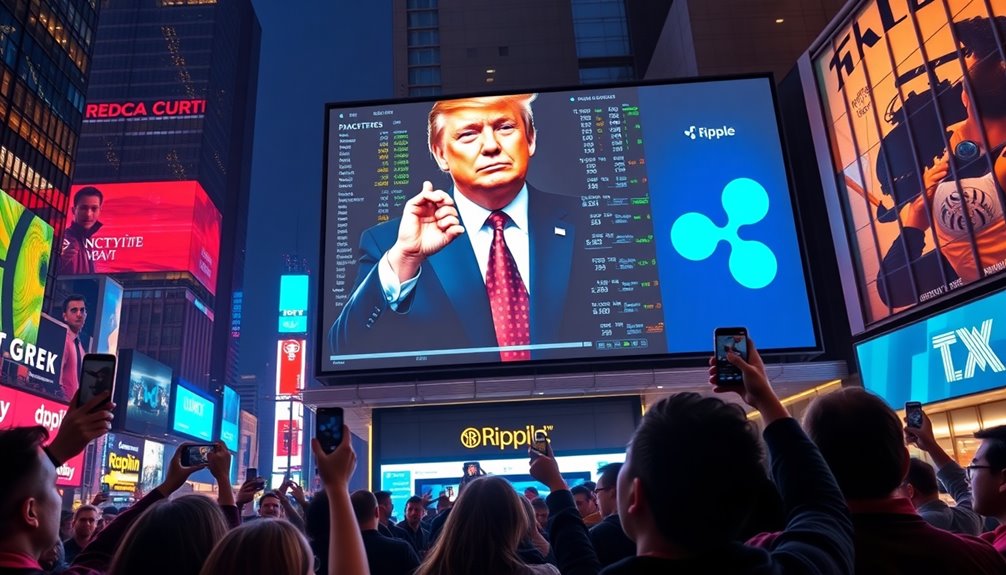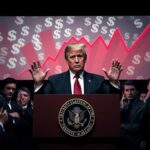As you explore Trump's evolving approach to cryptocurrency, you'll notice how Ripple's rising prominence is shaping his vision. The recent executive order signals a shift toward fostering innovation rather than imposing strict regulations. This change could have significant implications for the U.S. position in the global crypto arena. What does this mean for the future of digital assets and the competitive landscape? The answer may surprise you.

As the U.S. steps into a new era of digital finance, Trump's vision for cryptocurrency marks a significant shift in policy direction. On January 23, 2025, he signed an executive order aimed at supporting the U.S. crypto industry, which signifies a clear pivot from the previous administration's approach. This new framework aims to establish comprehensive federal regulations for digital assets, promoting innovation over risk aversion.
One of the first steps in this effort is the formation of a Working Group on Digital Asset Markets, tasked with coordinating federal efforts and providing regulatory clarity. You'll see that this group is required to submit a report by July 22, 2025, and it has just 60 days to review current regulations and suggest necessary changes. This process is critical for anyone involved in or considering entering the crypto market.
The Trump administration's approach actively reverses the policies put forth by the Biden administration. By repealing Executive Order 14067, Trump's team aims to provide clear guidelines that support the growth of the crypto sector. You can expect initiatives from the SEC, which has already established a Crypto Task Force focused on developing comprehensive regulations to foster a more innovation-friendly environment.
Moreover, the executive order promotes access to open public blockchain networks and backs dollar-pegged stablecoins, protecting the sovereignty of the U.S. dollar. Interestingly, it prohibits the establishment of central bank digital currencies (CBDCs), which could reshape the landscape of digital finance. The focus here is on nurturing innovation in both digital assets and blockchain technology.
You'll find that the roles of regulatory bodies like the SEC and CFTC are becoming more defined, though challenges remain due to overlapping responsibilities. The SEC classifies cryptocurrencies as securities while the CFTC regards them as commodities, and the IRS treats them as property for tax purposes. This duality creates a complex regulatory environment that needs addressing. The SEC's Crypto 2.0 Task Force is designed to develop a comprehensive regulatory framework for the crypto industry.
Finally, Trump's vision emphasizes the economic potential of the crypto industry. By fostering this sector, the administration aims to boost job creation, attract investments, and maintain U.S. leadership in digital financial technology. As global competition intensifies, the U.S. seeks to position itself favorably within the international landscape of cryptocurrency and blockchain innovations.
With these changes, the future of cryptocurrency in the U.S. looks poised for dynamic growth and influence.

















